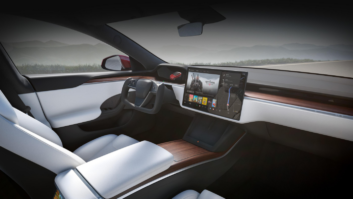Well, the auto industry finally released its reply to Sen. Ed Markey, and AM broadcasters won’t find good news in it.
As you’ll recall, Markey had given carmakers an open invitation to write encouraging words about the role of AM, and they entirely declined.
I don’t find the carmakers’ response to Markey surprising. And as Fred Jacobs put it in his own commentary last week, writing about AM radio is a buzzkill. “But like that old drunk uncle who shows up at the reunion, AM is still part of the radio family,” he said.
Yet I don’t think FM broadcasters should be feeling too secure right now either.
Why? Because it’s not much of a stretch for me to imagine that automakers, having dropped AM from some vehicles, might start to wonder how essential AM is in any vehicle — and whether FM is as necessary as we all want to think.
While this sounds to some radio loyalists like heresy — or at least a premature worry — I’m talking about the long term; and these are questions that have been haunting the connected car discussion for years. It’s why for instance we see Xperi making the argument that broadcasters should make their dashboard offerings as compelling and up to date as possible while radio still enjoys a strong legacy presence, something we’ve discussed in our recent jointly produced ebook.
More immediately I think it’s notable that the auto alliance devoted almost all of its response to addressing Markey’s comments about the role of broadcast in emergency alerting rather than any discussion of the role of radio more broadly.
The NAB and others have leaned on that argument hard over the years to protect aspects of broadcasting’s unique regulatory standing and role in society. Here we see how the efficacy of that argument may be eroding.
The carmakers even quote the FEMA IPAWS Program Management Office as stating that one of its challenges is that the public is moving away from radio and broadcast/cable TV as primary channels of news and information. This is the media environment radio plays in now, and radio’s business strategies have to recognize that.
Radio’s supporters won’t be passive, of course.
It is heartening to see former leaders of the Federal Emergency Management Agency telling the Department of Transportation that AM remains important as part of the nation’s public safety infrastructure.
It’s welcome to read that FCC Commissioner Nathan Simington thinks the issue of the inclusion of AM radios in electric vehicles “deserves urgent attention.”
And you know NAB has to be taking this very seriously. In public, NAB says that it has had productive dialogue with the car industry since the original exchange of letters. Behind the scenes is it possible that NAB might use some of its considerable lobbying weight to push for — gasp — a mandate to include broadcast radio in cars? That outcome seems far-fetched to me.
Taking a long view, I worry that dropping AM from certain vehicles on alleged technical grounds may end up being the beginning of a new and less stable chapter in radio’s history with the car.
Meanwhile I’ll be keeping an eye on the “radio as a paid subscription” concept that Fred Jacobs, Jerry Del Colliano and others have been blogging about. I think this could become very important.
For now ask yourself these questions:
If carmakers today decided to keep AM in all vehicles but only on a subscription option, would car owners pay for it?
Would they pay for FM?







